Flirting; the waterfowl way...
Attraction is a fascinating concept. I just love looking at the breeding birds interact at this time of year. There are so many reasons for and variations in copulation display across the animal kingdom that it is difficult to even know where to start! I have collated below a selection of photos which depict a variety of flirtation methods across waterfowl species. Whilst some seem more elaborate than others, they are all captivating and interesting in their own way. I hasten to add that these interpretations are all my own, collected together in my head after 6 years working with my eyes peeled! And so, here is a little insight into the cheeky antics of my charges.
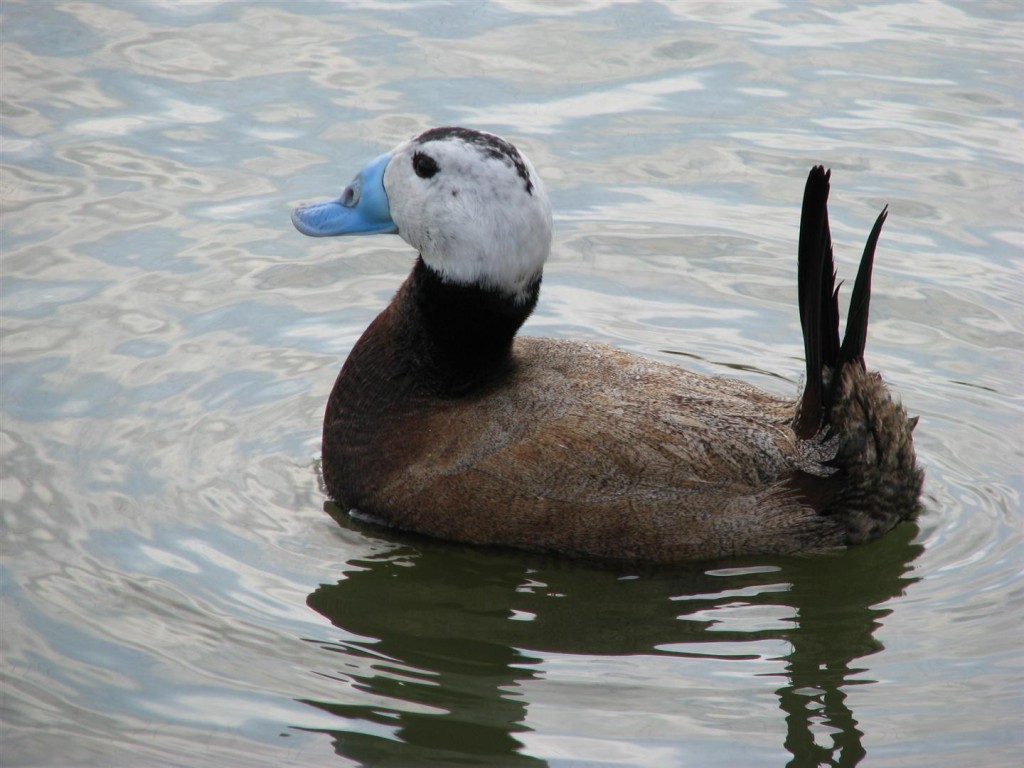
The display of the male white-headed duck is possibly the most heavily engineered flirtation method that I have been lucky enough to witness so far in my career. It is pretty special indeed I can tell you! The photo you can see above is the grand finale, and many other facets precede this pose.
Firstly the male herds all the ladies within the pen into a corner, or approaches as many as he can at once. He then fattens himself to the utmost, flattens his head and tail to water level, and uses his great paddled feet to shuffle side to side in the water between his ladies. The whole experience is done with the utmost physical control so that he appears to almost hover temporarily above the water as if weightless. He couples this dance with an off beat whistle, "beat... cheep cheep, beat... cheep cheep!" His intention of course is to attract the ladies, but they tend to make it their business to look as indignant as possible to the whole charade. He finishes closest to the female who is at least looking in his direction. He will stretch his neck (typically kept low and compact throughout the year) as high as it will go, revealing a black patch at the nape of the neck in stark contrast to his white head and blue beak. At the same time his "stifftail" will stand vertical, every feather millimeter perfect. The most desirable males will have their head and tail at near equal height, perfect tail-feather condition and a robust muscular body. They will have beaten every other male in the pen into submission so that they can perform this elaborate display unhindered by jealous competitors.
The photo above depicts a young lad who we have placed in the pen in order to observe and learn for the future. You can see that his face is still a little pot-marked from teenage-hood, and his overall marks for effort are maybe just a 5 out of 10. Everything however is done for a reason, and so after a couple of years when the prime male has passed his genes onto several future generations we will remove him from the breeding pen, add a new juvenile male, and the handsome male above will come into his inheritance at last!
The only hitch? In the white-head world, the ladies choose. If the top male is not palatable to the ladies, then we need to take note. In addition, the male needs to be fertile if we are going to risk him as our sole fertiliser. As a result, we always have white-head groups in several different pens. If the male in the breeding pen off-site proves poor, we have groups in both the Asian pen and Mrs. Noahs which we can call upon to stand up to the mark.
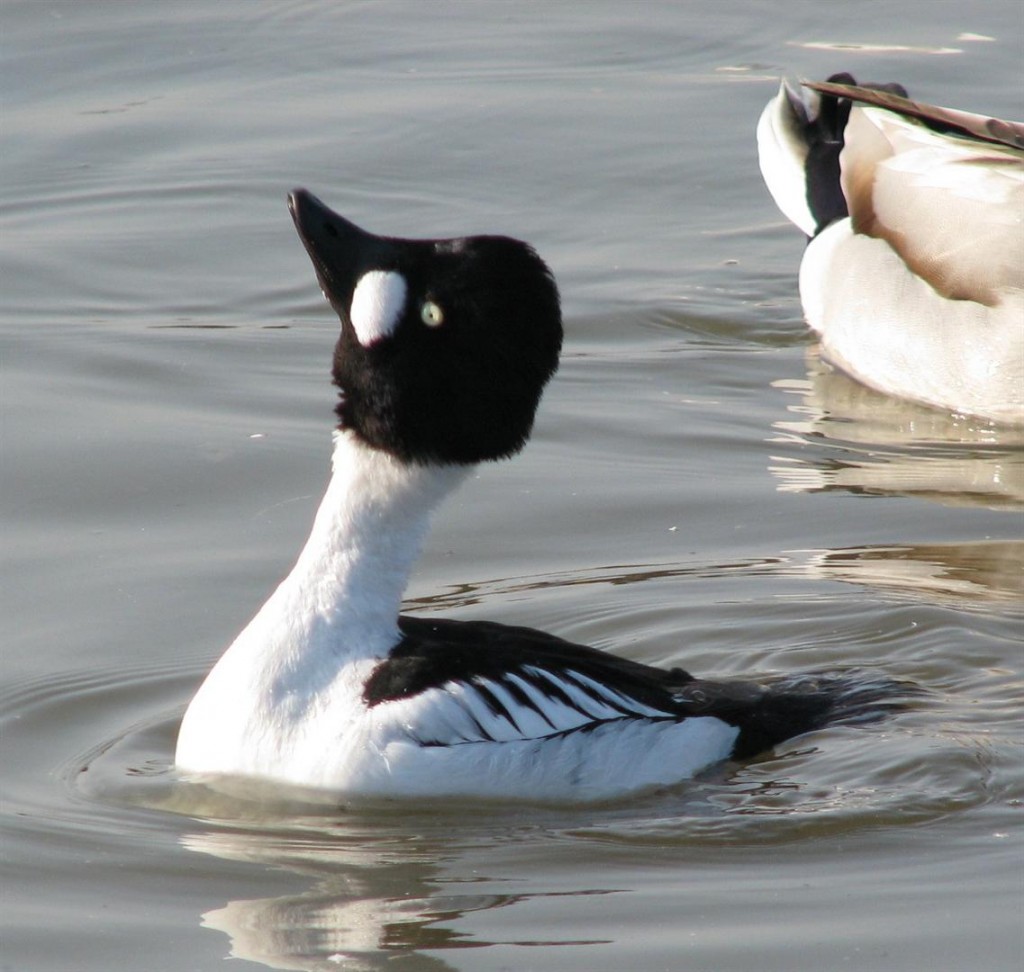
European Goldeneye possess a breeding display style of utter flamboyance and eccentricity and the group in the Tundra pen are in full breeding flow. A large proportion of the whole group tend to swim in close proximity to one another, eyeing each other up and swimming at speed. As with the white-heads, the ladies choose. To show their interest the girls lower their heads to the water and emit a low quacking honk. The males show their finesse by lowering their heads to the water and immediately flicking it back on to the base of their tails. Here they pause for just a few seconds before pounding the water with their big feet and literally lurching forward in the water with a vocalisation akin to "squeryiik" and ending erect as you see in the photo above. Once they have secured one another's attention, they will bob their heads in parallel for a time before doing the deed. Male goldeneye play no part in the breeding scenario from this point on, and so you never see these birds in dedicated pairs. Perhaps such a flamboyant display is needed to set the male apart from his competitors in order to secure a short-term bond, rather than a life-long connection.
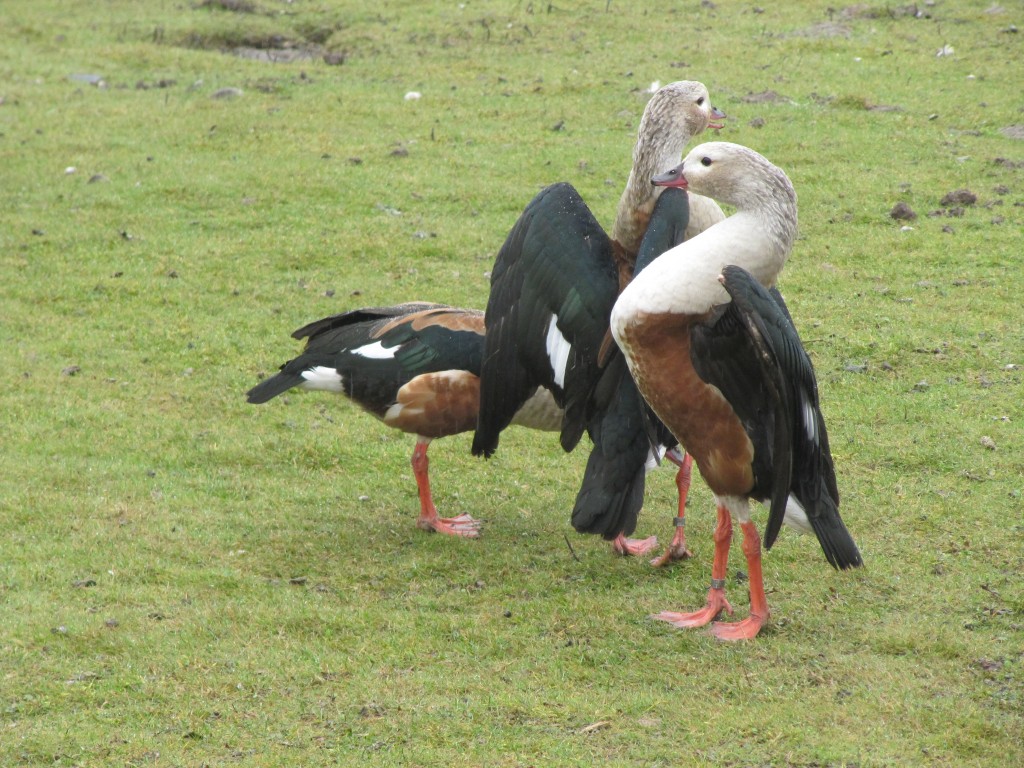
Orinoco geese (or at least our Orinoco geese) embark in a dramatic form of courtship dance but with the sweetest possible temperament. I look at an Orinoco and cannot believe that they could hurt a fly. Their general demeanor is almost apologetic! They approach breeding with the same sensitivity. These two handsome chaps were both approaching this particular female with the intention of permanently pairing with her. There is no denying that just one of them can be the victor. Despite there being 6 females to choose from this female clearly has a particular allure, but they still performed like perfect gentlemen. After making their individuals points through dramatic chest puffing, strutting and spurring, they both then settled down to a spot of mutual preening. Watching two male competitors preen one another's breast feathers is oddly cathartic, and adorable. What sweeties!
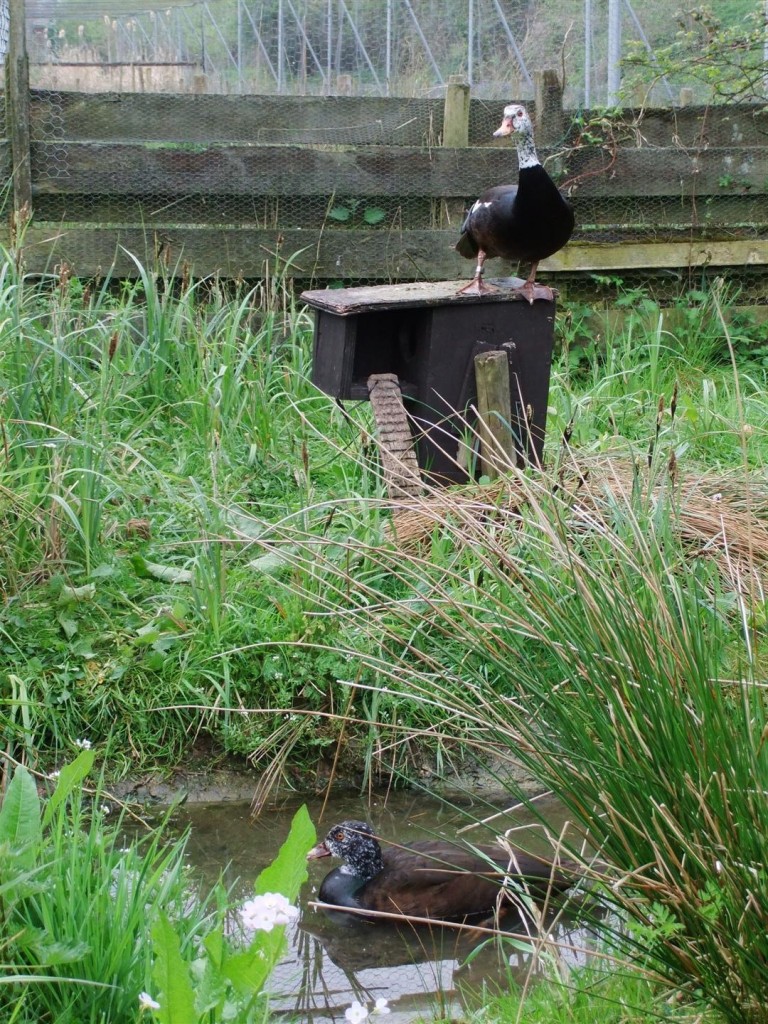
Ooh White-winged wood ducks are one of my absolute favourite birds. A tropical wooded wetland species of the Eastern Indian ocean islands; these birds are not strictly monogamous. We keep ours in permanent pairs because they can prove aggressive to one another if they are not particularly charmed... Whilst some of them seem to just put up with one another, these two seem genuinely smitten. Despite having no other competition, the male still needs to make some effort to impress. Every year he stands on his favourite nestbox and dances to the other male next door, and the female seems to appreciate the show! They forage and perch together, and when they do get down to some flirtation it is pretty basic. They both have a specialised honking call; higher in the female than the male, and nod their heads at one another. In the high season both birds develop a blood red cornea to advertise their breeding potential and availability, and if all the jigsaw pieces fit together then here's to a successful season! The year is already looking bright because just this morning she laid her first egg! I am thrilled!
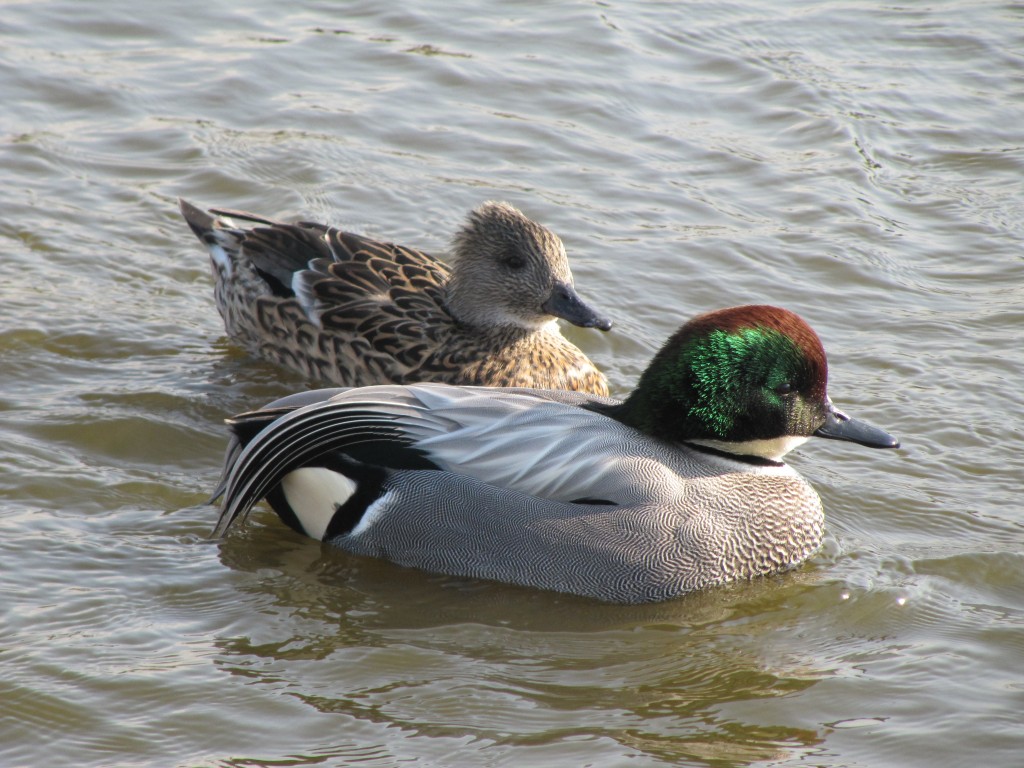
The dapper gentleman of the waterfowl world, the falcated duck male appears to me monstrously vain. These pretty little lads depend upon their sheer beauty to make up for their relatively rudimentary puffed up attitude and rough copulation style. Much like the mallard, this poor falcated female is sporting a bald spot on the back of her scalp. These chunky little ducks aren't particularly dexterous, and the whole affair is just a bit clumsy really! They do pair up each spring, but again we tend to keep pairs together over several seasons. Unlike the Goldeneye, the male falcated does tend to hang around during incubation and beyond, although they don't share in the incubation at all. They just tend to stand around looking a bit obvious and shouting at everyone.
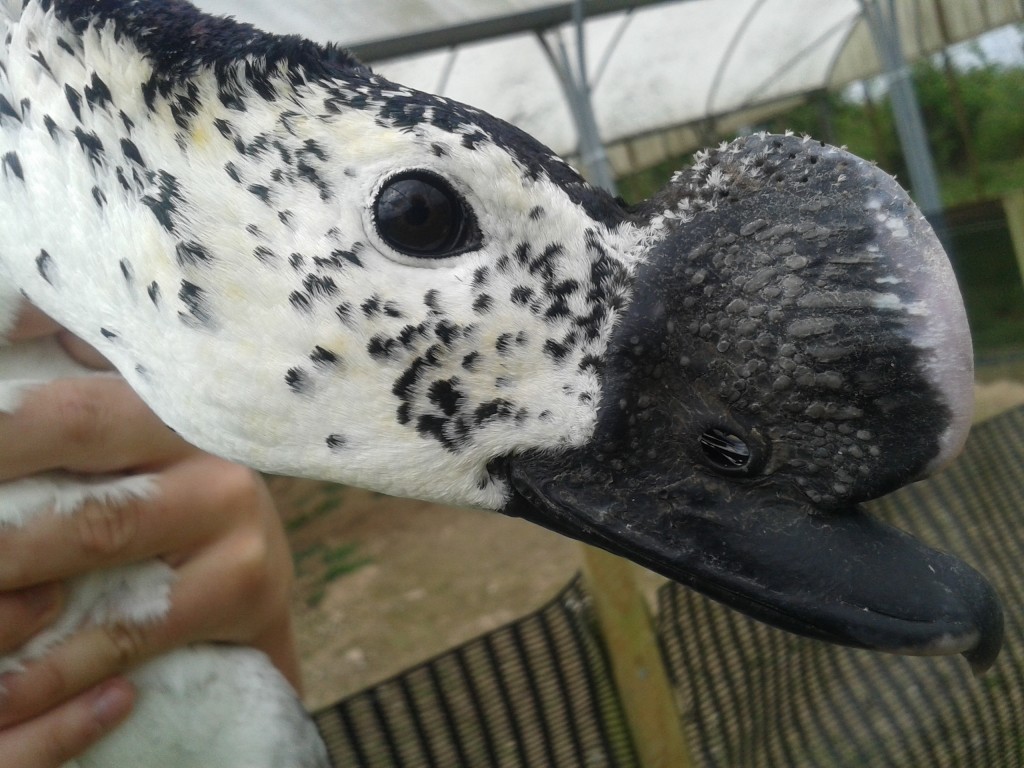
And if all other efforts fail and you just can't accrue the suitable amount of attention; grow a giant comb on your beak!
I hope you have enjoyed these insights into flirtation in the waterfowl world. Next time you come to Slimbridge I hope that you can look at the captive collection in a whole new way.

